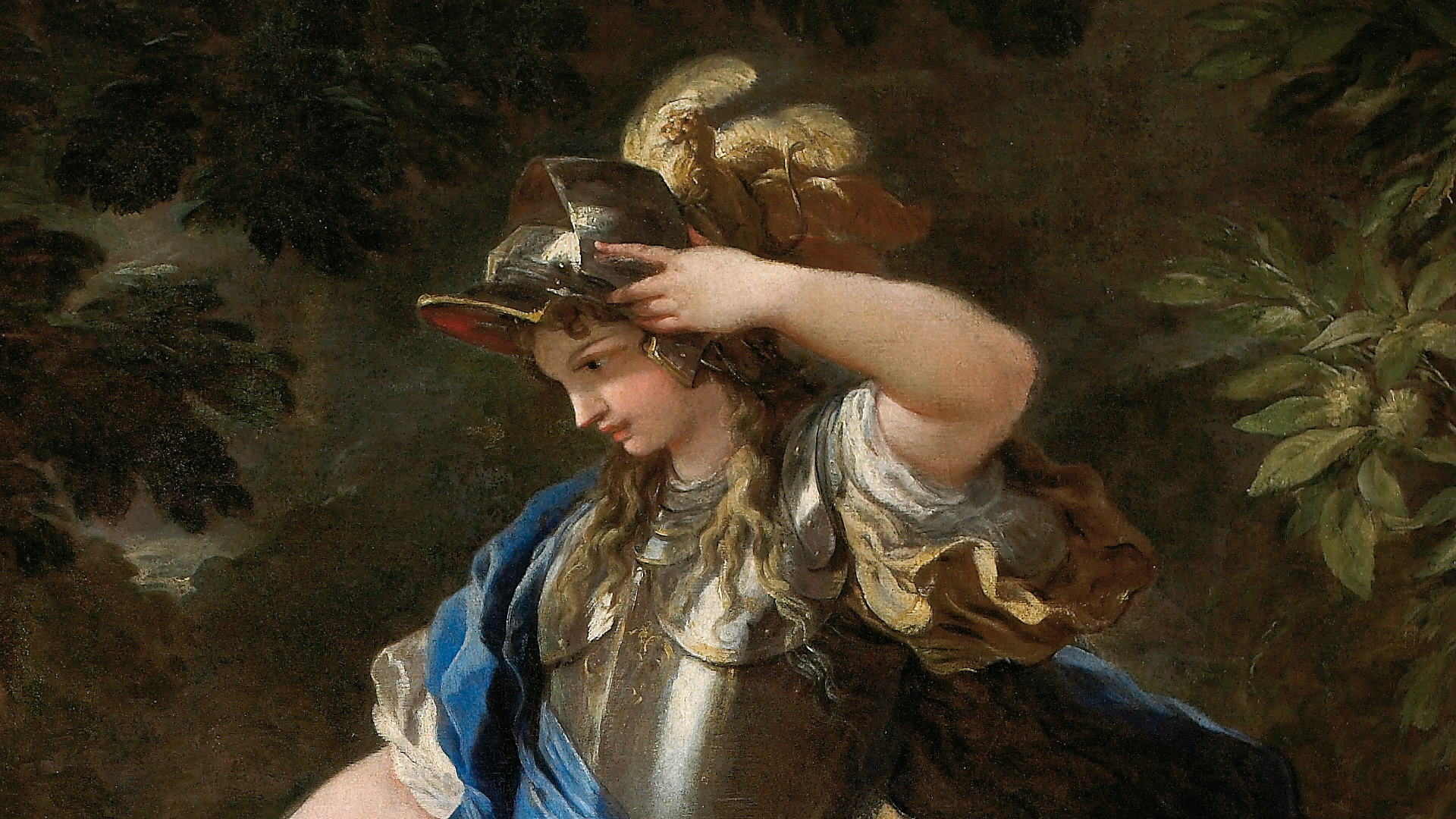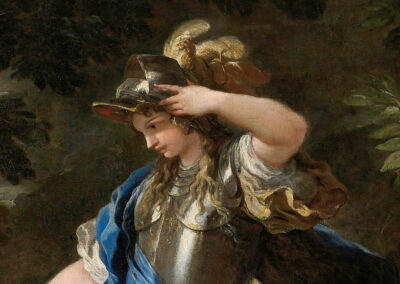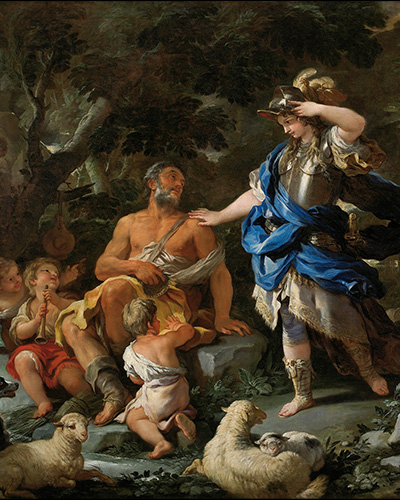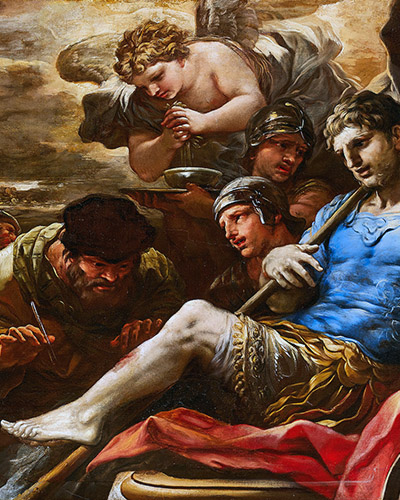Among the vast collection of paintings by Luca Giordano that the 9th Count of Santisteban treasured during his Neapolitan viceroyalty (1688-1696), the series of twelve canvases inspired by various scenes from the famous poem "The Poem of Luca Giordano" was particularly noteworthy from the outset. epic entitled Liberated Jerusalem by Torquato Tasso. Its quality was recognised by the high valuation given to it by successive appraisers in the post-mortem inventories kept in the Ducal Archives of Medinaceli, following the example of the royal painter Antonio Palomino, who valued it in 1716 (Cerezo 2005).
This series, which was exhibited in the main hall of the Madrid palace of Santisteban, located in Calle del Nuncio, which the inventories call "...", was also exhibited in the main hall of the palace of Santisteban in Madrid.from the red stand"accompanied by the self-portrait of Lucas Jordán and the equestrian portraits of the IX Count of Santisteban and his first-born son, the ill-fated III Marquis of Solera, was praised by Antonio Ponz. Many other travellers were able to see it there, as the Santisteban pictorial gallery was, apparently at the suggestion of Ceán Bermudez, open to the public two days a week.
The series was commissioned by Francisco de Benavides, IX Count of Santisteban - whose library contained Tasso's poem - from Luca Giordano during his Neapolitan viceroyalty (1688-1696) and its various sizes and formats - six squares, four taller than wide and two landscape - suggest that it was conceived to be exhibited in the aforementioned salon "...".from the red stand"The door and over-door spaces can be adjusted to suit the door and over-door spaces.
This famous Counter-Reformation epic, completed in 1575 and first published in full and with the author's permission in 1581, was an extraordinary success with 146 editions between the 16th and 17th centuries. Structured in twenty cantos, its main plot is the siege of Jerusalem and the liberation of the Holy Sepulchre during the First Crusade, which is interwoven with various love stories involving characters who, while battling the Saracens, are torn between love and duty.
The twelve canvases, described in the 1877 catalogue together with the first verses of the song on which they are based, were included in the collection of paintings inherited from his grandfather by Luis Jesús Fernández de Córdoba, 17th Duke of Medinaceli (1880-1956). The collection of the Fundación Casa Ducal de Medinaceli holds two of them: one which, in the inventory of 1716, was among those of square format and among the best valued by Antonio Palomino, Erminia and the Shepherds -recorded in the 1877 catalogue as "...".Erminia, fleeing from Polyphemus, arrives at the hut of some shepherds, attracted by their songs."and another, The miraculous cure of Godfrey of Bouillonpresumably one of the 1716 overdoors, described in the entry in the above-mentioned catalogue as "...".Apparition of the angel to Godfrey".




